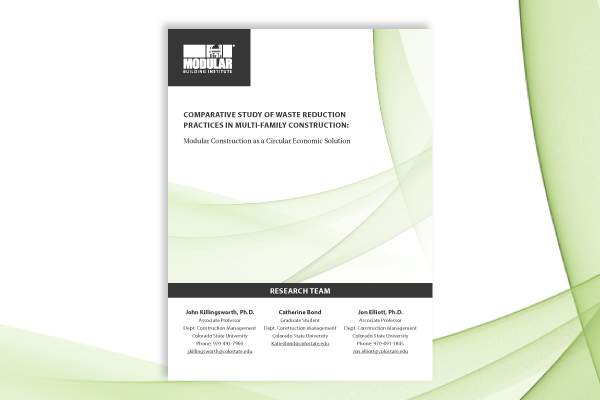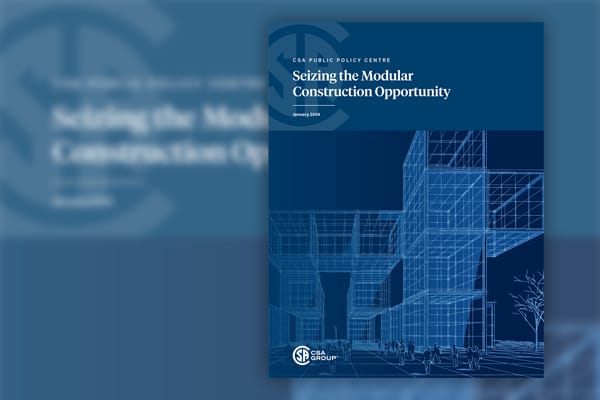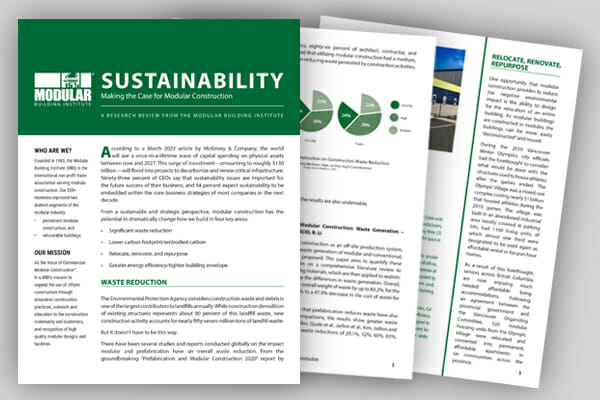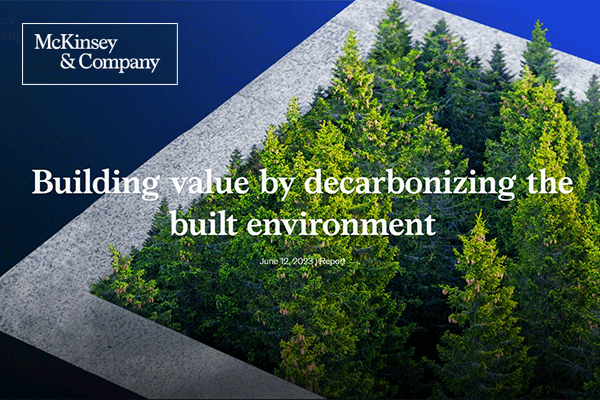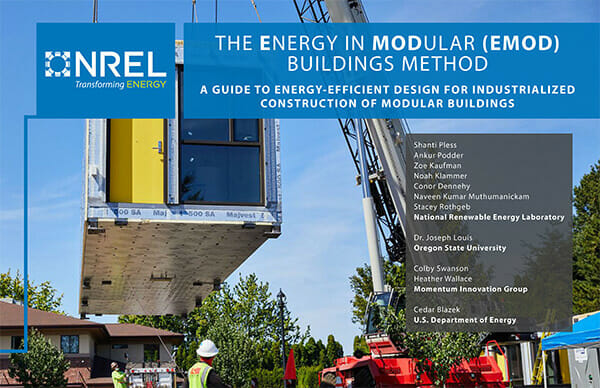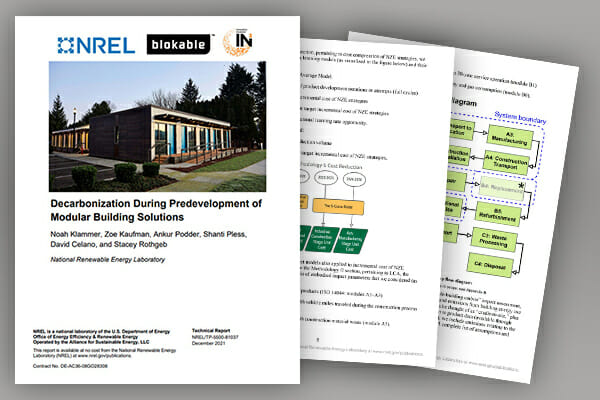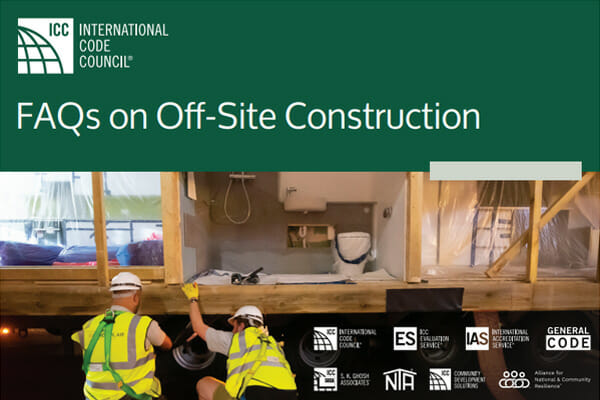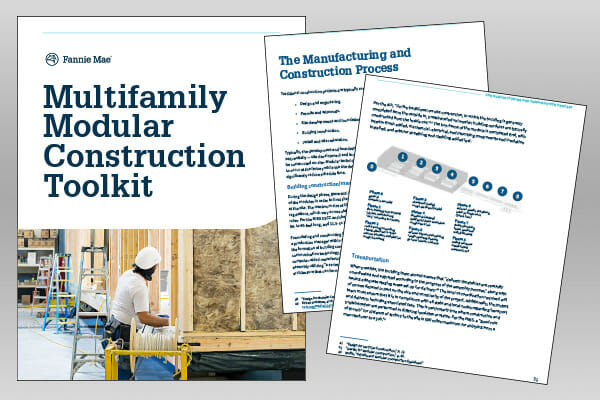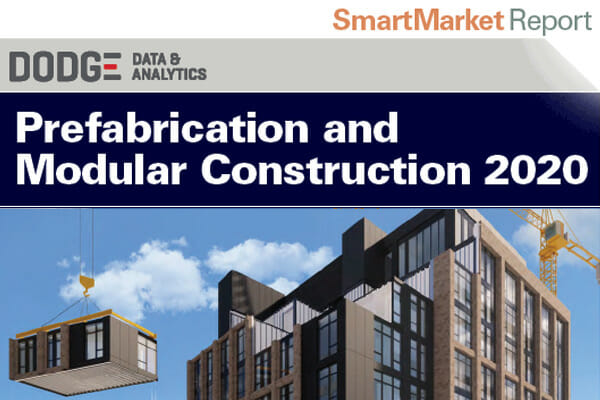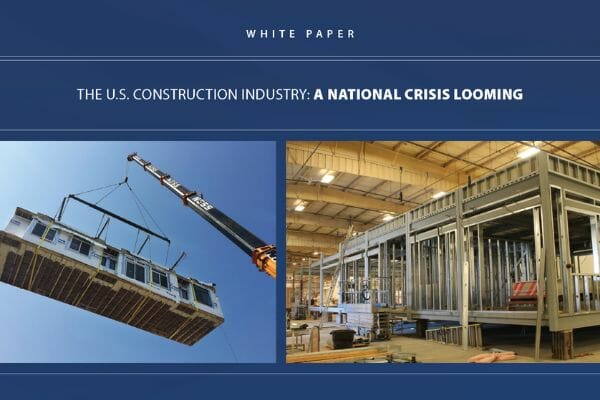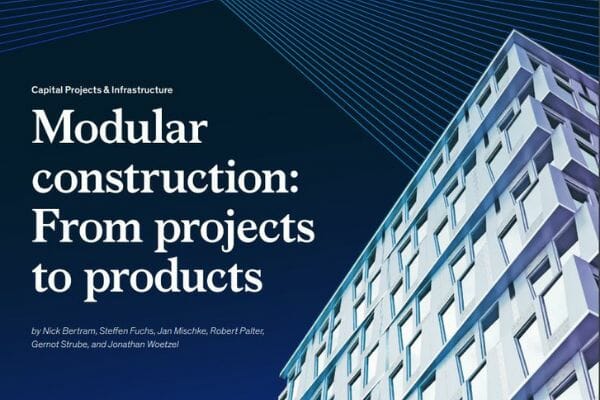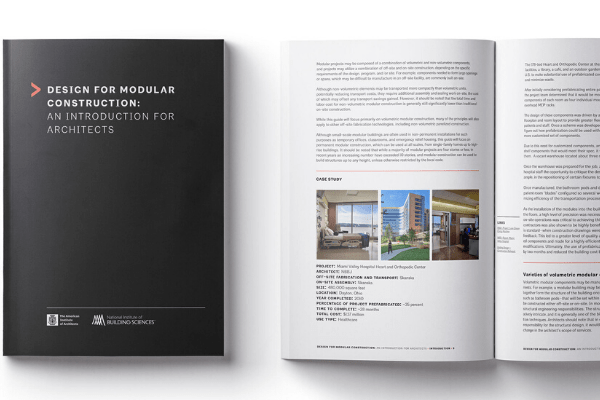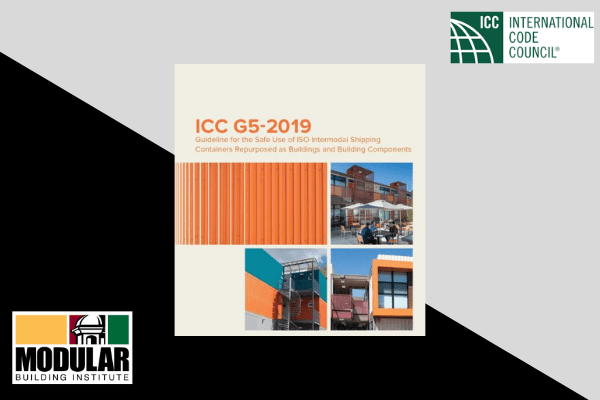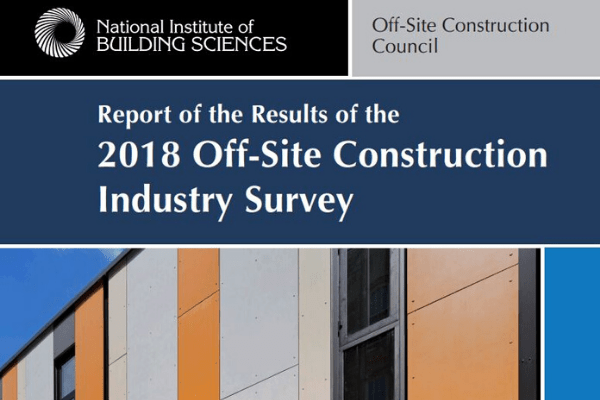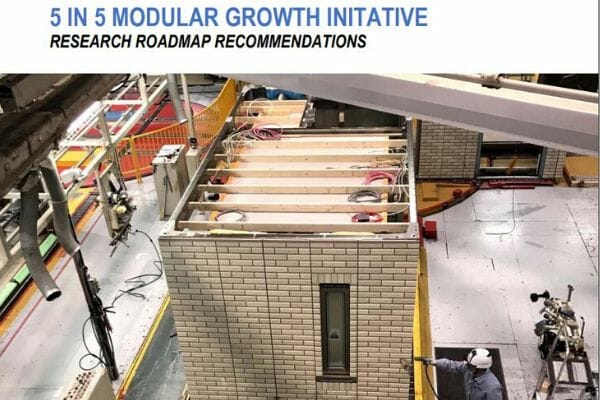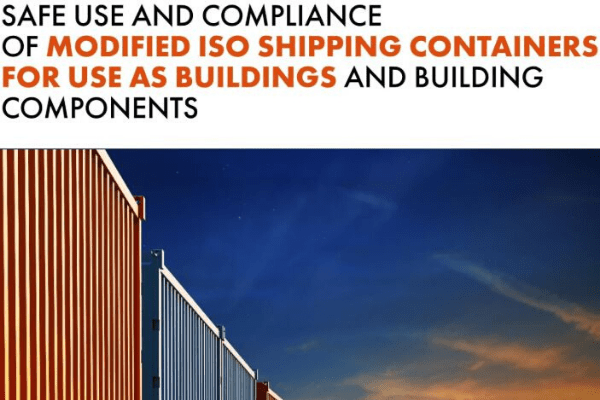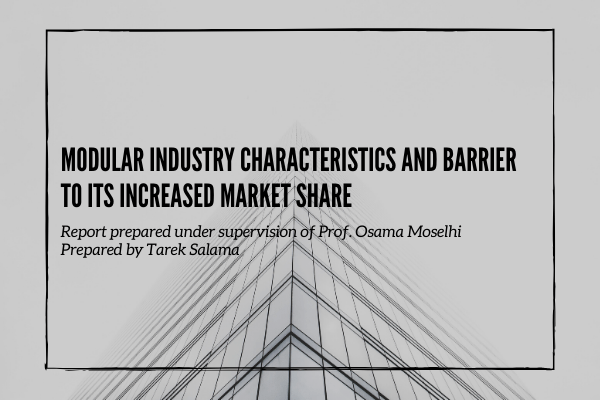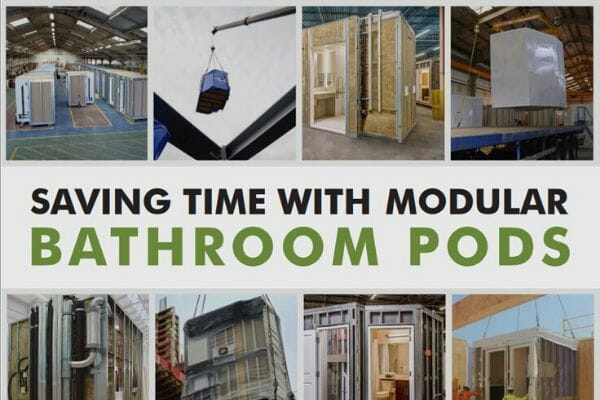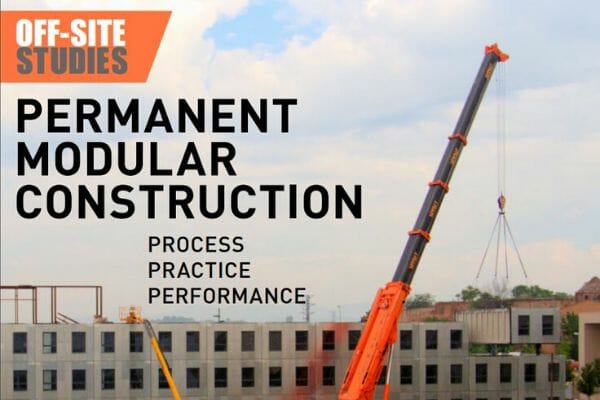Research, Whitepapers & Modular Building Studies
MBI maintains a collection of modular research papers and modular building studies relevant to the offsite and modular construction industries. Here you'll find data, best practices, and research from thought leaders around the world.
MBI also offers its own annual reports that provide exclusive details about the permanent modular construction and relocatable (portable) building industries. Learn more about MBI's annual reports.
Modular Building Institute:
Comparative Study of Waste Reduction Practices in Multi-Family Construction
This study compared two multi-family housing projects, both wood-framed and both located in the mountain-west states of the U.S. The fundamental conclusion of this study is that off-site framing practices achieve a notable reduction in wood waste, (compared by framed square footage), nearly eliminates ALL methane producing landfill waste by practice, more effectively reuses wood cut-off waste by practice, and achieves higher ‘circularity’ for wood cut-off waste.
CSA Public Policy Centre:
Seizing the Modular Construction Opportunity
The CSA Public Policy Centre’s new report, Seizing the Modular Construction Opportunity, highlights how innovative modular methods can help to bring various building forms—from single unit housing to complex high-rises—online more quickly. Owing to efficient manufacturing practices and controlled factory environments, modular can achieve completion rates that are 25% to 50% faster than conventional construction approaches.
Modular Building Institute:
Sustainability: Making the Case for Modular Construction
Adapted from MBI's 2023 Permanent Modular Construction annual report, "Sustainability: Making the Case for Modular Construction" is a succinct, 6-page review of current research showing that modular construction, by its very nature, is a more sustainable, energy-efficient, green, and environmentally-friendly building method. This research review summarizes academic research from around the world to show how modular construction compares to traditional, on-site construction using four key metrics of sustainability.
McKinsey & Company:
Building Value by Decarbonizing the Built Environment
The built environment ecosystem consists of real estate and infrastructure and touches all aspects of human life, from homes and offices to factories and highways. It is also responsible for about of a quarter of the world’s greenhouse-gas (GHG) emissions.
To help industry players make progress toward decarbonization, “Building value by decarbonizing the built environment” assesses the most effective solutions available today. This analysis shows that many levers not only have proven abatement potential but also are already cost-effective. In other words, companies across the built-environment ecosystem could derive value immediately from these less-emissive technologies and solutions.
National Renewable Energy Laboratory:
The Energy in Modular (EMOD) Buildings Method
The multifamily construction industry is crucial in achieving the goal of affordable, zero carbon emissions housing in the United States. With building construction and operation contributing to 37% of global carbon emissions, and a shortage of housing units in the US requiring the construction of an additional 3.8 million units, there is a clear need for action. Net zero energy (NZE) has been established as a target for high-performance building, and industrialized construction is one approach to efficiently achieve affordable NZE housing.
National Renewable Energy Laboratory:
Decarbonization During Predevelopment of Modular Building Solutions
The multifamily construction industry is crucial in achieving the goal of affordable, zero carbon emissions housing in the United States. With building construction and operation contributing to 37% of global carbon emissions, and a shortage of housing units in the US requiring the construction of an additional 3.8 million units, there is a clear need for action. Net zero energy (NZE) has been established as a target for high-performance building, and industrialized construction is one approach to efficiently achieve affordable NZE housing.
International Code Council:
FAQs on Offsite Construction
The ICC consulted with the Modular Building Institute to create this list of frequently asked questions about the offsite construction industry. Aimed at industry professionals and newcomers alike, this is a great resource for anyone interested in learning more about modular building codes and regulations. For more information on modular construction, see MBI's answered FAQs.
Fannie Mae, NIBS, and the Modular Building Institute:
Multifamily Modular Construction Toolkit
Fannie Mae and the Modular Building Institute partnered together to develop a toolkit resource for multifamily lenders, developers, and stakeholders. The resource is meant to help lenders and developers navigate their first modular project. It includes an overview of the modular construction method, an analysis of the multifamily modular construction industry, advantages and challenges with modular construction, considerations for developers choosing modular research, best practices, and a case study.
Dodge Data & Analytics SmartMarket Report:
Prefabrication and Modular Construction 2020
This landmark modular building study provides a comprehensive examination of the current state and future expectations for prefabrication and modular construction. The Prefabrication and Modular Construction 2020 SmartMarket Report takes a close look at critical drivers, obstacles and benefits of using these methods, based on insight from architects, engineers and contractors already leveraging them.
MBI White Paper:
The U.S. Construction Industry: A National Crisis Looming
With the U.S. economy strong again and unemployment rates historically low, one might wonder why anyone would think a crisis is looming. The answer is simple: there are not enough skilled workers to build all the projects that need to be built in the same manner they have been built in the past. The demand (need) for construction in the U.S. is high while the supply of labor is flat and declining relative to demand.
McKinsey & Company Study:
Modular research construction: From projects to products
For decades, construction has lagged behind other sectors in productivity performance. Now there is an opportunity for a step change: shifting many aspects of building activity away from traditional onsite projects to offsite manufacturing-style production. While modular (or prefabricated) construction is not a new concept, it is attracting a fresh wave of interest and investment on the back of changes in the technological and economic environment.
American Institute for Architects:
Design for Modular Construction: An Introduction for Architects
Construction approaches are changing its reputation. When done thoughtfully—through early collaboration with fabricators—architects can create unique designs that address a range of client needs. From quality and safety to schedule efficiency and sustainability, modular building has a lot to offer owners and project teams. Learn more about the variety of benefits of modular construction with the new AIA Modular and Off-Site Construction Guide.
International Code Council:
Guideline for the Safe Use of ISO Intermodal Shipping Containers Repurposed as Buildings and Building Components
More than 30 million International Organization for Standardization (ISO) intermodal shipping containers are in use around the world today. These containers were built to ISO standards and maintained to standards defined by the International Maritime Organization’s (IMO) “Convention for Safe Containers.” New or used, containers are now repurposed at a pace that makes their reuse a multi-billion-dollar global industry. Containers are regularly repurposed and converted into International Residential Code and International Building Code occupancy uses. As a building material, the applications are widely diverse as is the extent to which the container is used as a structural building element.
National Institute of Building Sciences:
Report of the Results of the 2018 Off-Site Construction Industry Survey
This document, The Report of Results of the 2018 Off-Site Construction Industry Survey, compiles the results. It provides an update on who is using off-site construction in the industry and how it is being used, as well as the perceived benefits and challenges of using off-site construction in projects. This data, as an update from the 2014 survey, will gauge how the Council can continue to educate and support the industry in implementing off-site construction practices.
MBI, University of Utah, & Northeastern University:
5-in-5 Modular Research Growth Initiative
The 5 in 5 Growth Initiative: research roadmap recommendations, underpins this effort in order to determine a strategic path forward of how to increase the uptake of permanent modular construction in North America. This report covers the research results, roadmap and recommendations from this process
MBI & National Portable Storage Association:
Safe Use and Compliance of Modified ISO Shipping Containers For Use as Buildings and Building Components
Are ISO Containers safe to use as buildings and building components? This paper will help code officials and end-users to distinguish between the various applications for modified shipping containers and to utilize these structures in a safe and efficient manner.
Concordia University:
Modular Industry Characteristics and Barrier to its Increased Market Share
The modular building study captured the current practices in modular construction and investigated barriers to increase modular construction share by focusing on five hypothesis points.
Whole Building Design Guide:
Christ Hospital Joint And Spine Center
Due to the demanding need for this type of healthcare the owner, The Christ Hospital, desired the facility to be constructed as quickly as possible. This entailed looking at the project from the perspective of analyzing viable options in terms of pre-fabricating components in order to achieve the design goals of increased efficiency, schedule and quality.
MBI:
Saving Time with Modular Bathroom Pods
This white paper focuses on the interspersion of bathroom pods into traditional construction methods. This modular research will discuss how to know if bathroom pods are ideal for your project, the benefits of bathroom pods, and provide case study examples of successful bathroom pod implementations.
MBI Foundation, University of Utah, & National Institute of Building Sciences:
Offsite Studies - Permanent Modular Construction: Process, Practice, Performance
The research used a case modular building study method to compare PMC projects to traditional site-built projects globally for construction performance parameters such as cost, schedule, quality, and safety.
Resources Archives
2012
2011
2010
Offsite and Modular Construction Explained - Modular Building Institute Education Foundations
2009
2008
Designing out Waste: a design team guide for buildings- Waste and Resources Action Programme
LEED for Homes Rating System- U.S. Green Building Council
2007
Pre-Assembly Perks: Discover why modularization works- Construction Users Roundtable
2003
Planning for Construction Waste Reduction - U.S. Green Building Council
2002
1992
Building Performance: Hurricane Andrew in Florida - FEMA & Federal Insurance Adminstration

